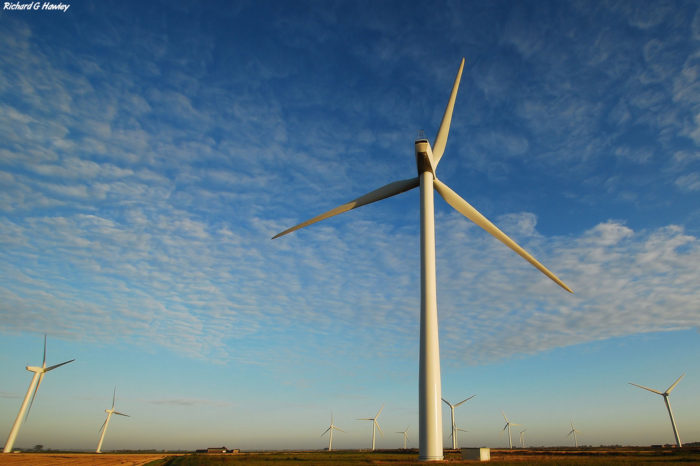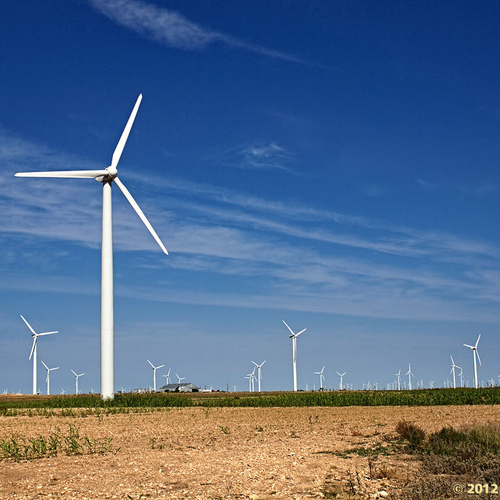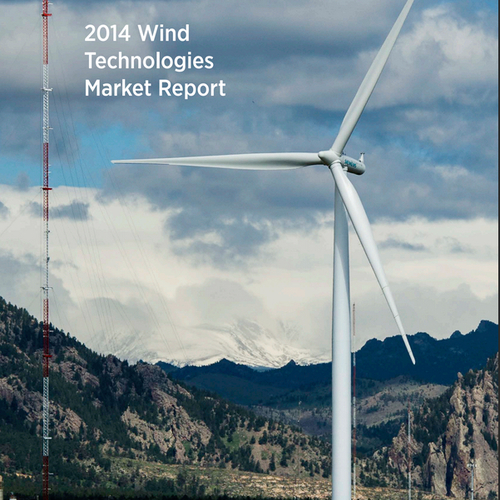
Image Credit: richardghawley via Flickr
Note: This is part one of a series of blogs highlighting recent progress in onshore and offshore wind energy, as well as discussing some of the continued opportunities, challenges and threats the industry faces in the near term. The series was originally published by the Natural Resources Defense Council.
By RACHEL FAKHRY
In the face of an administration that is hostile toward protecting the environment and addressing climate change, there is a bright spot in clean energy that can no longer be ignored: the nation’s onshore wind industry.
The good news was reported out in this year’s annual Wind Technologies Market Report, compiled by researchers at the U.S. Department of Energy’s Lawrence Berkeley National Laboratory, which said wind energy is the largest source of renewable power in the U.S. for the first time ever.
And the news is getting even better. Thanks in large part to important federal policies, in 2016, new wind projects continued to be added at a rapid rate, making up 27% of new capacity additions; the industry added nearly 15,000 new jobs, and now employs a record 102,500 Americans; and average wind power prices remain extremely low at $20 per megawatt hour, which is cheaper than any other form of new power generation.
As highlighted by the NRDC 5th Annual Energy Report, wind energy supply today is 350% greater than predicted by the U.S. Energy Information Administration a decade ago.
Offshore wind mades its debut
What’s more, the nation’s first offshore project was commissioned in 2016, the 30 megawatt (MW) Block Island project in Rhode Island, marking a major step forward for offshore wind energy (for more on that, stay tuned for our upcoming blog on offshore wind energy developments).
After a remarkable 2016 and 2015, the industry can only expect to report an incredible 2017. In fact, 2017 looks like it will be another remarkable year for wind energy. Wind installations had their second strongest first quarter ever, and just capped off a very robust second quarter with 40% more wind projects under construction compared to last year’s second quarter. Looking forward, we need to continue to prioritize smart state and federal policies for these benefits to continue.
Here are some of the key factors driving the industry’s top-tier performance:
Federal production tax credit
The federal production tax credit (PTC) remains a core driver for wind power investment. In December 2015, Congress passed a multiyear extension of the Production Tax Credit (PTC), providing long-term policy certainty for investors and developers. In 2016, power companies all across the country capitalized on the PTC by making strong, smart investments in this low-cost, zero-carbon resource. And the tax credits are expected to further bolster the industry’s near-term growth opportunities. Consider this quote from the CEO of Xcel Energy ― one of the largest utilities in the U.S. ― as a testament to wind’s increased attractiveness to utilities: “The fuel of tomorrow is literally on sale today. […] If I’m not firing up natural gas, instead I’m letting wind which is more economical do its work, then everybody benefits.”
Performance is getting better
Wind turbine performance is ever-improving. The average 2016 capacity factor of projects completed in 2014 and 2015 was 43%, compared to an average of 32% for projects built between 2004 and 2011. This performance upgrade is largely driven by improvements in turbine design, with average rotor diameter increasing by an impressive 13% compared to the previous five years, enabling turbines to capture a lot more energy. This technology advancement is driven in a large part by the U.S. Department of Energy’s (DOE) sizable investments in wind R&D to enable technology innovations and improvements.
Costs are coming down
Wind project costs are declining while performance is improving. Driven by lower turbine prices, the average total costs of installing a wind project fell to $1,590 per kilowatt, a roughly 6% drop from 2015. These price reductions, coupled with improved turbine technology, have put downward pressure on total project costs and wind power prices.
After reaching an all-time low in 2015, wind electricity prices remained at the average low price of $20 per megawatt hour in 2016. With prices that low, wind is the cheapest form of new power generation in many regions of the country. The dirt cheap prices are the product of improved turbine performance and continued cost reductions coupled with strong state and federal support.
Interest remains high
There is continued significant interest in wind energy. The amount of wind capacity in the transmission queues at the end of 2016 is a testament to the bright near-term outlook for wind energy. In fact, at the end of 2016, there were more than 140 gigawatts (GW) of wind capacity in the transmission queues — that’s more than one-and-a-half-times the total installed wind capacity in the U.S.! It’s also higher than all other generating sources in the queue — namely solar or natural gas projects. Although not all of these projects will get built, the substantial amount of wind capacity under consideration is a good indicator of the attractiveness of wind projects to investors and developers.
Grid operations are improving
Grid operators are getting better at integrating high amounts of wind energy. Fourteen states now have wind penetration of 10% or more — that’s four more states than in 2015 — with Iowa still leading the pack with 37% of its annual generation coming from wind in 2016. Importantly, grid operators are getting better at mitigating curtailment ― when renewable projects have to reduce output because of congestion on the grid or excess generation ― as wind penetration increases outpaced any increase in curtailment in most areas of the U.S.
This learning will help bring in more renewables into the nation’s electric grids and will further improve project economics. And this is a promising trend, as we need to rapidly boost our renewable energy generation to reduce carbon emissions and achieve our long-term climate goals.
Long-term growth
As for the longer-term growth, both the continued technological advancements from public and private investments and growing public support for clean energy ― even in the face of a hostile federal environment ― are enhancing the prospects of wind’s continued growth. Corporate demand for clean energy is burgeoning, and a large number of cities have now made impressive renewable energy pledges.
However, supportive federal policy remains crucial to wind’s sustained growth. The best way to ensure that we keep investing in this low-cost, clean resource (and reaping the many economic, environmental, and public health benefits) is to have a strong carbon policy in place that protects the health of Americans and enables the U.S. to capitalize on the global clean energy opportunity. With growing public support and the right policy, we can expect the U.S. wind industry to keep powering its way to a bright future.
Rachel Fakhry is a policy analyst in climate and clean air and Midwest programs for the NRDC.
Weekly Newsletter
Get building science and energy efficiency advice, plus special offers, in your inbox.














0 Comments
Log in or create an account to post a comment.
Sign up Log in